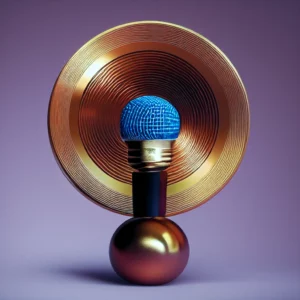30 Days of 16/8 Intermittent Fasting
On Sunday I finished a 30-day trial of intermittent fasting, testing the variation where one fasts for 16 hours and eats only during an 8-hour window each day. In this post I’ll share what the experience was like.
Of the various 30-day trials I’ve done, this was one of the easiest, especially after the first few days of adjustment. I messed up on one day for logistics reasons, eating in about a 10.5-hour window that day, but otherwise it was pretty smooth sailing. Some days I got the eating window below 7 hours. The tightest eating window I tried was about 6 hours.
I’ve had some previous fasting experience, including a 17-day water fast in 2016 and and 40-day water fast in 2017, so I’ve gone for longer stretches without food before. In each case it didn’t take much discipline except for the first few days. The same was true of intermittent fasting, although I still had to be watchful of the eating window each day.
Calibrating the Eating Window
I started this trial by figuring that I’d just skip breakfast each day, so my first eating window was 12 – 8pm. That was a decent place to start, but in practice it would be shifted later. When noon rolled around, I’d wrap up whatever work I was doing first, and then I’d also have to make something to eat. So when I used this window mentally, I didn’t actually start eating till 12:30pm or later.
That was okay, but I disliked the long morning stretches with no food, and I didn’t need to have dinner so late since I normally go to bed by 10:30pm. I got used to skipping breakfast, but I felt that I operated better with some food in the morning, especially when getting up early and exercising.
I tried moving the eating window earlier to 9am – 5pm. That was okay too, but coordinating with Rachelle to have such an early dinner didn’t work well. I didn’t feel like eating the last meal around 4:30pm. By the time I tested this earlier window, I’d already gotten used to waiting longer till breakfast, so I found it hard to stick with an earlier window, and my first meal naturally drifted later anyway.
Eventually I settled into a pattern I liked, although I still varied it a little. I’d simply wait till after 10am for the first meal. By the time I took the first bite of food, it was usually around 10:30am, which gave me till 6:30pm to finish dinner. That was a nice window, and it didn’t feel like such a long wait when getting up early. If I was hungry in the morning, I might eat shortly after 10am. But if I wasn’t feeling as hungry or if I was deep into my morning work, I might not get around to eating till 11am or later.
So after some testing and practice, instead of thinking about the window, I found it easier to just think about the start time and not go any earlier than 10am for the first bite of food. When 10am came around, I could easily make a game of pushing it back a little – by 15 minutes, 30 minutes, or sometimes an hour or more. The benefit of pushing it back was that I could eat a later dinner that day if I wanted.
The Experience
I can’t say that this trial was too beneficial, but it wasn’t bad either. I had heard a lot of hype about this way of eating, but my experience seemed pretty bland compared to some.
Some days I felt like I could really use something to eat in the morning, but most of the time those thoughts were easily dismissed. I just had to occupy my mind with something other than food. Getting wrapped up in a creative project did the trick.
When the first meal finally came around each day, I appreciated it more than usual. It really felt like breaking a fast, even though it had only been 16 hours with no food.
I also felt more conscious about what I was eating, especially for that first meal of each day. When eating around 10:30am, I’d think about whether I wanted to call it breakfast and have some steel cut oats with fresh berries and coconut milk… or call it lunch and have a salad with air-baked tofu or tempeh.
Since this experience broke my previous eating routine, it made me think about when to eat and to pay more attention to how hungry I was, instead of just eating because it was the usual meal time.
Mentally I didn’t notice any meaningful improvement from eating this way – no gains in mental clarity that I can discern, but no decline either. By not having an early breakfast though, I save time on food prep and eating, so I’ve been able to get started on my workday earlier when I want.
Weight Loss
I lost a little bit of weight during the 30 days, just 1.6 pounds. But that was mainly in the last 10 days. Throughout the first 3 weeks, I was close to my starting weight the whole time. Even so, if that rate of weight loss was extended for a whole year, it would be 19 pounds, which isn’t bad for an approach that’s fairly easy to maintain.
Eating in an 8-hour window didn’t seem particularly beneficial if I just ate the same amount of food that I previously would. It was surprisingly easy to still eat about the same amount – for those first few weeks. But then I gradually noticed that I was eating less food than before. And that’s when I started seeing my weight nudging down. In the long run then, I think this form of intermittent fasting could make it easier to lose weight because you’ll likely eat less food this way. After a while it began feeling more effortful to try to pack in the same amount of food into an 8-hour window.
I think the key here was to relax into this way of eating and not to be to controlling with it. Initially I focused on that 8-hour window and thought about when I should eat my meals during that window, as if I had to pre-decide when to eat. Later I just focused on getting past 10am and letting my appetite dictate when to eat, and that’s when this experience became easier, and I began losing a little weight.
Sometimes I just didn’t seem as hungry as before. One evening I only ate a banana with some peanut butter for dinner, and I didn’t want more than that. Other days I noticed myself going for longer stretches without eating. I’d feel empty inside, but I wasn’t hungry per se.
Final Thoughts
For the first 20 days, this experiment felt pretty useless. I couldn’t discern any benefits, and I was still calibrating to find the right eating window for me. It was only in the last 10 days that I began to notice some shifts. By then I had aligned with an eating window that worked well (roughly 10:30am to 6:30pm), and I stuck with a simple rule: Wait till after 10am before having any food.
Overall I think that 30 days was too little time to draw any conclusions about what the long-term effects of this way of eating may be. The effects were slight relative to other dietary experiments I’ve done over the years. The shifts from going vegan were far more profound and noticeable (like losing 7 pounds in the first week when my body finally shed years of dairy clog).
This experience made me curious about intermittent fasting though, so I’ll likely continue to experiment with it. Some people have suggested shortening the eating window even more, like to 4 hours or less. And there are many other variations to try as well.
I like flexibility, so I don’t expect to be as strict about intermittent fasting when traveling or on a busy schedule, but the simplicity of not eating till after 10am has been working reasonably well, and it seems fairly easy to continue.




